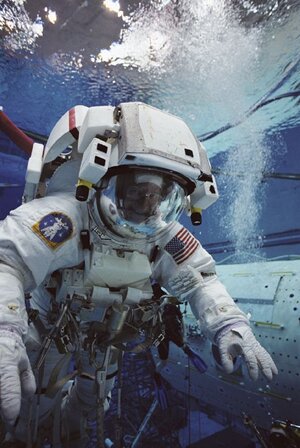Accept all cookies Accept only essential cookies See our Cookie Notice

About ESA
The European Space Agency (ESA) is Europe’s gateway to space. Its mission is to shape the development of Europe’s space capability and ensure that investment in space continues to deliver benefits to the citizens of Europe and the world.
Highlights
ESA - United space in Europe
This is ESA ESA facts Member States & Cooperating States Funding Director General Top management For Member State Delegations European vision European Space Policy ESA & EU Space Councils Responsibility & Sustainability Annual Report Calendar of meetings Corporate newsEstablishments & sites
ESA Headquarters ESA ESTEC ESA ESOC ESA ESRIN ESA EAC ESA ESAC Europe's Spaceport ESA ESEC ESA ECSAT Brussels Office Washington OfficeWorking with ESA
Business with ESA ESA Commercialisation Gateway Law at ESA Careers Cyber resilience at ESA IT at ESA Newsroom Partnerships Merchandising Licence Education Open Space Innovation Platform Integrity and Reporting Administrative Tribunal Health and SafetyMore about ESA
History ESA Historical Archives Exhibitions Publications Art & Culture ESA Merchandise Kids Diversity ESA Brand Centre ESA ChampionsLatest
Space in Member States
Find out more about space activities in our 23 Member States, and understand how ESA works together with their national agencies, institutions and organisations.
Science & Exploration
Exploring our Solar System and unlocking the secrets of the Universe
Go to topicAstronauts
Missions
Juice Euclid Webb Solar Orbiter BepiColombo Gaia ExoMars Cheops Exoplanet missions More missionsActivities
International Space Station Orion service module Gateway Concordia Caves & Pangaea BenefitsLatest
Space Safety
Protecting life and infrastructure on Earth and in orbit
Go to topicAsteroids
Asteroids and Planetary Defence Asteroid danger explained Flyeye telescope: asteroid detection Hera mission: asteroid deflection Near-Earth Object Coordination CentreSpace junk
About space debris Space debris by the numbers Space Environment Report In space refuelling, refurbishing and removingSafety from space
Clean Space ecodesign Zero Debris Technologies Space for Earth Supporting Sustainable DevelopmentLatest
Applications
Using space to benefit citizens and meet future challenges on Earth
Go to topicObserving the Earth
Observing the Earth Future EO Copernicus Meteorology Space for our climate Satellite missionsCommercialisation
ESA Commercialisation Gateway Open Space Innovation Platform Business Incubation ESA Space SolutionsLatest
Enabling & Support
Making space accessible and developing the technologies for the future
Go to topicBuilding missions
Space Engineering and Technology Test centre Laboratories Concurrent Design Facility Preparing for the future Shaping the Future Discovery and Preparation Advanced Concepts TeamSpace transportation
Space Transportation Ariane Vega Space Rider Future space transportation Boost! Europe's Spaceport Launches from Europe's Spaceport from 2012
STS-46 patch, 1992
Thank you for liking
You have already liked this page, you can only like it once!
ESA astronaut Claude Nicollier (CH) was the first Swiss astronaut, and ASI astronaut Franco Malerba flew as the first Italian in space, both on STS-46 from 31 July to 7 August 1992.
Designed by the crew, the STS-46 patch depicts the Space Shuttle in orbit around Earth, accompanied by major payloads: the European Retrievable Carrier (EURECA) and the Tethered Satellite System (TSS- l). The TSS mission will study the dynamics and electrodynamics of tethered systems in space and the physics of Earth's ionosphere. Visible on Earth's surface are the USA and the Member States of ESA, in particular, Italy, a partner with the USA in the TSS programme. The US and Italian flags, as well as the ESA logo, further serve to illustrate the international character of STS-46.
According to Franco Malerba, "It was a team effort but the leader was Claude Nicollier with the help of a graphics artist from the NASA Astronaut Office. We had first a few proposals and then a few reviews in our crew meetings. I don't recall of any real conflict. Claude, very kind and 'consensus-oriented', was the right man for the job. I believe the designer was Claude himself with strong involvement of Jeff Hoffman and whole crew support.
"In order to give more room to the Tethered payload graphic representation, we decided to 'kick' the flags out of the main circle; this gave the patch its unique 'balloon-shape'. The first version had a yellow electron beam which did not look right to me (but would save one colour and make the patch cheaper). I, as the science Payload Specialist, insisted for a magenta beam (a special colour, revealed by our electron beam tests in the vacuum chamber).
"The patch is the strongest crew symbol, I often wear the pin version of it; to me, it's almost like a personal business card!"
-
CREDIT
NASA -
LICENCE
ESA Standard Licence

ESA astronaut Claude Nicollier

Claude Nicollier at ESTEC Open Day

Claude Nicollier training

ISS Expedition 41 patch, 2014















 Germany
Germany
 Austria
Austria
 Belgium
Belgium
 Denmark
Denmark
 Spain
Spain
 Estonia
Estonia
 Finland
Finland
 France
France
 Greece
Greece
 Hungary
Hungary
 Ireland
Ireland
 Italy
Italy
 Luxembourg
Luxembourg
 Norway
Norway
 The Netherlands
The Netherlands
 Poland
Poland
 Portugal
Portugal
 Czechia
Czechia
 Romania
Romania
 United Kingdom
United Kingdom
 Slovenia
Slovenia
 Sweden
Sweden
 Switzerland
Switzerland
























